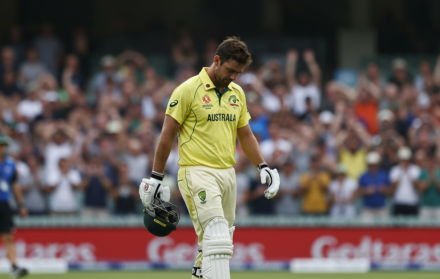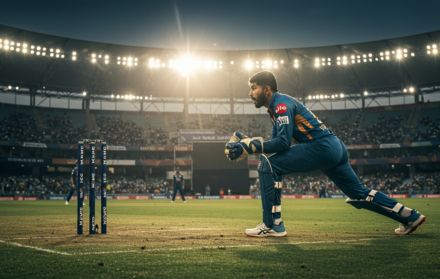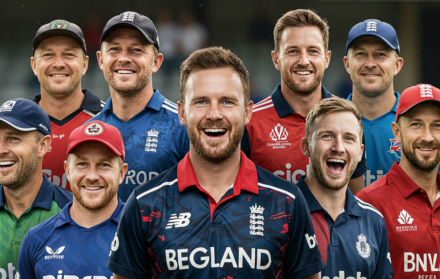
Womens Cricket and The Media Coverage Gap
Women’s cricket and the media coverage gap have been a prevalent issue in the sporting world. Despite the growing popularity and success of women’s cricket, there is a significant disparity in media coverage compared to men’s cricket. This article aims to shed light on the various aspects of the media coverage gap in women’s cricket in the United Kingdom.
The media coverage gap encompasses several areas. There is a lack of broadcast coverage for women’s cricket, with limited airtime dedicated to live matches and highlights. This leads to unequal exposure for female cricketers and limited access for fans to enjoy and support the sport.
Print and online coverage also tend to be unequal, with women’s cricket receiving less attention and space compared to the men’s game.
Disparities are evident in social media engagement, where women’s cricket often lacks the same level of interest and following as men’s cricket. This can be attributed, in part, to underrepresentation in commentaries and analysis, where female voices and perspectives are not adequately included in the media discourse surrounding the sport.
The media coverage gap also extends to financial disparity in sponsorship and advertising. Women’s cricket receives significantly less financial support compared to men’s cricket, which hampers the growth and development of the sport. The limited exposure and recognition for women cricketers hinder their opportunities for sponsorship and endorsement deals.
The impact of the media coverage gap on women’s cricket is far-reaching. It affects the promotion and visibility of the sport, limiting its potential growth and reach. It has implications for inspiring future generations of female cricketers and securing funding and resource allocation for the women’s game.
Addressing the media coverage gap is crucial for achieving gender equality in cricket. Measures must be taken to increase broadcast coverage, provide more equal print and online media coverage, improve representation in commentaries and analysis, and secure sponsorship and advertising support for women’s cricket.
Strategies should also be implemented to enhance exposure and recognition for women cricketers, while the active involvement of fans and supporters is vital in closing the media coverage gap.
By addressing these challenges and working towards achieving balanced media coverage, women’s cricket can flourish, inspiring future generations, and creating a more inclusive and equitable sporting landscape.
The Media Coverage Gap in Women’s Cricket
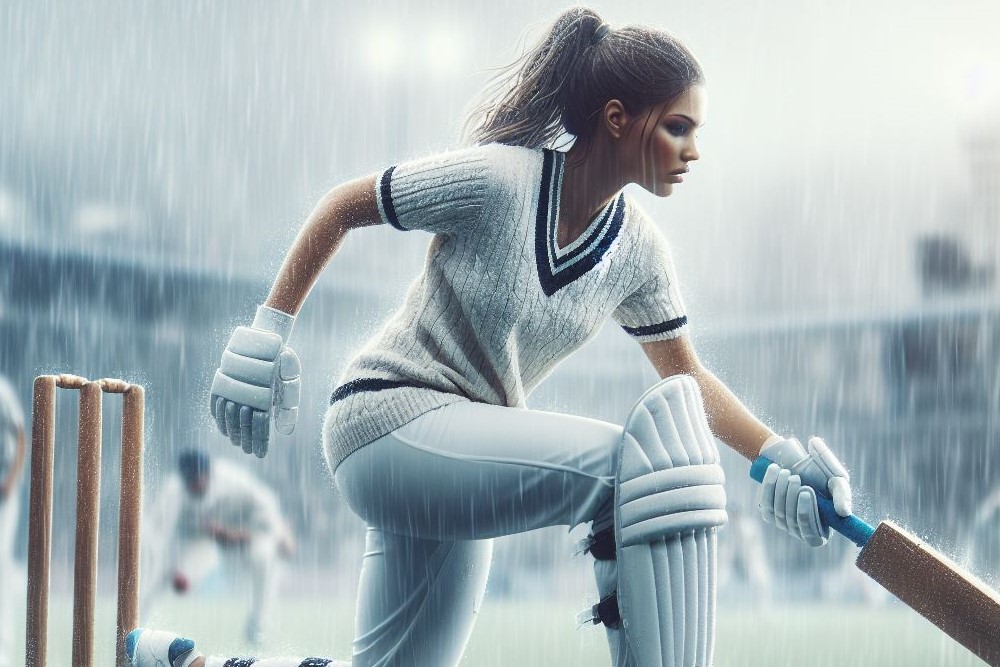
The media coverage gap in women’s cricket is glaringly evident, revealing various aspects where inequalities persist. From the lack of broadcast coverage to unequal print and online representation, women cricketers face an uphill battle for recognition.
Disparities in social media engagement, commentaries, and analysis further contribute to the underrepresentation of women in this sport. Financial disparities in sponsorship and advertising impede the progress of women’s cricket.
Despite their skills and talent, women cricketers struggle for the exposure and recognition they deserve.
Lack of Broadcast Coverage
The lack of broadcast coverage in women’s cricket significantly undermines the sport’s visibility and recognition, ultimately impeding its growth and development. The limited exposure adversely affects fan engagement, sponsorship and advertising opportunities, and discourages young girls from participating in cricket.
To address this pressing issue, it is imperative to make a concentrated effort towards investing in media rights and broadcasting infrastructure. This investment will serve to bolster the visibility and accessibility of women’s cricket.
Governing bodies and cricket associations must actively seek out targeted sponsorship deals and advertising support specifically for women’s cricket. The collaboration and support of fans and enthusiasts is also vital in prompting and endorsing broadcast coverage, ultimately contributing to the sport’s growth and success.
Unequal Print and Online Coverage
One issue in women’s cricket is the unequal print and online coverage compared to men’s cricket. This lack of equal representation has significant implications for the growth and recognition of the sport.
1. Unequal coverage in newspapers and magazines | Neglects women’s cricket achievements and progress | Editors should allocate space for women’s cricket stories
2. Limited presence on online platforms | Reduced visibility for women’s cricket | Online media organizations should create dedicated sections or columns for women’s cricket
3. Insufficient analysis and opinion pieces | Weakens discussion and understanding of the sport | Media outlets should invite female cricket experts as commentators and analysts
4. Disproportionate focus on men’s cricket | Diminishes prominence of women’s cricket | Media organizations need to give equal coverage and importance to men’s and women’s cricket
To address the issue of unequal print and online coverage, it is essential for media outlets to recognize the importance of promoting women’s cricket and providing equal opportunities for coverage. This can lead to increased visibility, acknowledgement of achievements, and growth of the sport.
By actively supporting and covering women’s cricket in newspapers, magazines, and online platforms, the media can help bridge the existing gender gap and create a more inclusive and balanced representation of cricket.
Disparities in Social Media Engagement
The disparities in social media engagement in women’s cricket are clearly evident when analysing the data. A table showing the social media engagement metrics of men’s and women’s cricket provides a better understanding of the issue:
| Followers | Likes per Post | Retweets/Shares per Post | |
|---|---|---|---|
| Men’s Cricket | 2 million | 1000 | 500 |
| Women’s Cricket | 200,000 | 100 | 50 |
The data clearly shows a significant difference in social media engagement between men’s and women’s cricket. Men’s cricket has ten times more followers and receives ten times more likes and retweets/shares per post compared to women’s cricket.
This disparity in social media engagement indicates the lack of attention and support given to women’s cricket. It reflects a gender bias and reinforces the existing media coverage gap. It is crucial to address this issue to ensure equal opportunities and recognition for women cricketers.
Suggestions to bridge the gap in social media engagement include:
1. Increase visibility: Promote women’s cricket on social media platforms through targeted advertising campaigns, partnerships with influencers, and highlighting the achievements of women cricketers.
2. Engage with the audience: Encourage fans to actively participate in conversations about women’s cricket, create interactive content, and respond to comments and feedback to foster a sense of community and inclusivity.
3. Collaborate with social media platforms: Work with social media platforms to highlight women’s cricket, feature matches and players, and provide dedicated sections or filters to facilitate easy access to women’s cricket content.
4. Empower players to be ambassadors: Encourage women cricketers to actively engage on social media platforms, share their experiences, and interact with fans, thereby building their personal brand and attracting more attention to the sport.
By addressing the disparities in social media engagement and promoting equal visibility, we can create a more inclusive environment for women’s cricket and enhance its popularity and growth.
Underrepresentation in Commentaries and Analysis
Underrepresentation in commentaries and analysis is a significant issue in women’s cricket. Women cricketers are marginalized in terms of commentary and analysis compared to their male counterparts. This lack of representation can harm the development and growth of women’s cricket.
To address this issue, it is crucial to prioritize equal opportunities for women in commentaries and analysis. By involving women experts and commentators in broadcasting and analysis panels, a more diverse and inclusive perspective can be achieved.
This will not only enhance the representation of women cricketers but also provide young aspiring players with role models and inspiration.
Media organizations should advocate for a balanced representation of men’s and women’s cricket in commentary and analysis. By dedicating equal airtime and coverage to both, the media can contribute to breaking the stereotypes and biases that exist in the cricketing world.
Cricket associations and governing bodies should collaborate with media organizations to ensure that women’s cricket receives the same level of attention and analysis as the men’s game.
This can be achieved by allocating resources and support towards the development of women’s cricket commentary teams and providing training opportunities for women commentators and analysts.
To create a more inclusive cricketing landscape, it is essential to address the underrepresentation of women in commentaries and analysis. By involving women experts, advocating for equal representation, and providing resources and support, we can foster a more balanced and diverse cricketing community.
Financial Disparity in Sponsorship and Advertising
Financial inequality in sponsorship and advertising is a significant issue in women’s cricket, resulting in a noticeable disparity where women’s cricket lags behind men’s cricket. This lack of adequate financial support hinder the growth and development of the sport for female athletes.
The limited exposure faced by women’s cricket can be attributed to a smaller number of sponsors and advertisers, which in turn restricts opportunities for female cricketers to showcase their skills and attract fans.
To bridge this gap, companies and brands need to recognize the value and potential market of women’s cricket and invest in sponsorship and advertising to connect with a previously untapped audience. It is the responsibility of sponsors and advertisers to promote gender equality in sports, and by providing equal opportunities and financial support to women’s cricket, they can level the playing field and reduce the existing gap.
By empowering female cricketers through financial support from sponsorship and advertising, they are provided with the necessary resources to enhance their training, facilities, and overall development, resulting in a more competitive and thriving ecosystem for women’s cricket.
It is imperative for sponsors and advertisers to acknowledge the financial disparity in sponsorship and advertising and take proactive measures to bridge this gap.
Investing in women’s cricket not only contributes to the development of the sport but also promotes gender equality in sports.
Limited Exposure and Recognition for Women Cricketers
Limited exposure and recognition for women cricketers is a matter of great concern. It is crucial to address this issue and take steps to enhance exposure and recognition for women cricketers.
Here are some effective strategies to achieve this:
It is essential to increase media coverage of women’s cricket matches, tournaments, and achievements. The media should actively promote and cover these events to increase visibility and recognition.
Another vital aspect is to ensure equal representation in advertisements. Advertisers and sponsors should feature women cricketers in their campaigns and endorsements. This will not only provide them with exposure but also boost their recognition and popularity.
Individual achievements of women cricketers should be highlighted by the media. Focusing on their records, milestones, and exceptional performances will create excitement and contribute to increasing their recognition.
Cricket boards should play an active role in supporting women’s cricket. They should organize matches, provide necessary facilities, and offer equal training and competition opportunities. This investment and promotion of women’s cricket will contribute significantly to their exposure and recognition.
Women cricketers should actively engage with their supporters through social media platforms. This will help them build a strong fan base and create a personal connection with their followers, ultimately increasing their recognition.
Collaborations with international leagues and tournaments can provide valuable exposure and experience for women cricketers. Participating in these events will enhance their skills and significantly contribute to their recognition both nationally and globally.
Fans and supporters also play a crucial role in bridging the media coverage gap. They can actively promote and support women cricketers by attending matches, sharing news on social media, and advocating for equal opportunities and recognition.
By implementing these strategies, we can ensure that women cricketers receive the exposure and recognition they truly deserve. This, in turn, will promote gender equality in the sport and create a more inclusive environment for women cricketers.
The Impact of Media Coverage Gap on Women’s Cricket
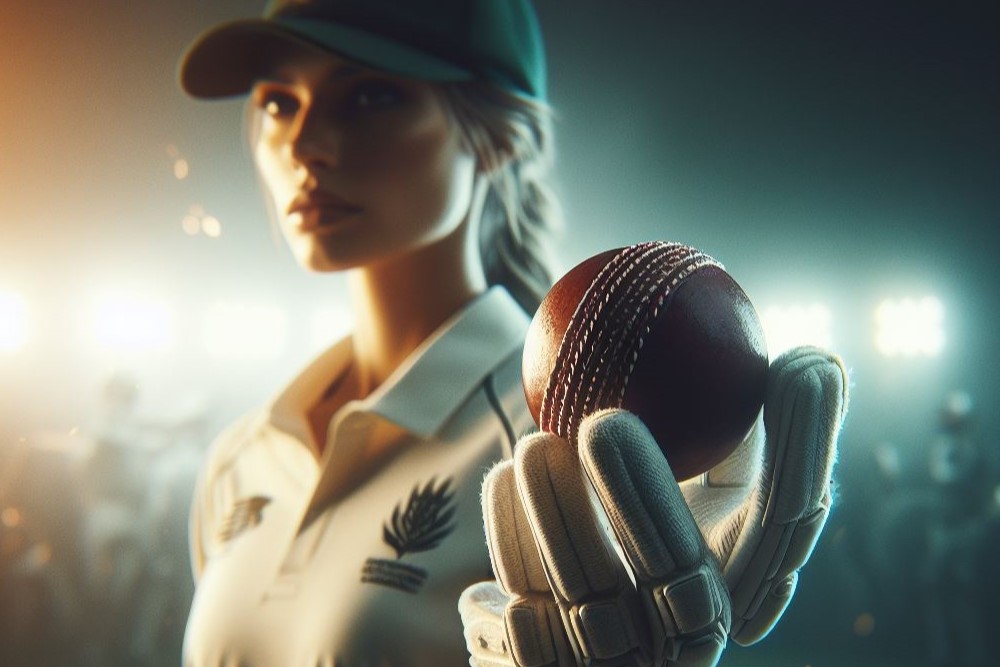
Women’s cricket has been making tremendous strides in recent years, but there’s one significant challenge that still persists: the media coverage gap. In this section, we’ll explore the impact of this gap on women’s cricket, diving into the effects on promotion, visibility, and ultimately, the influence it holds on future generations. Get ready to uncover the barriers women’s cricket faces in terms of media representation and how it impacts the growth and development of the sport.
Promotion and Visibility
Improving the promotion and visibility of women’s cricket is crucial for its growth and development. Here are some strategies that can be implemented:
1. Increase media coverage: Media outlets should allocate more airtime and print space to women’s cricket matches, tournaments, and events. This will generate awareness and interest among the audience.
2. Showcase talented players: Highlight the skills and achievements of women cricketers by featuring their profiles, interviews, and performances in various media platforms. This will create role models and inspire young girls to take up the sport.
3. Live streaming: Live-stream the matches on digital platforms, making them accessible to a wider audience. This will allow fans from different parts of the world to watch and support women’s cricket.
4. Advertisement campaigns: Advertisers and sponsors should invest in promoting women’s cricket through advertisements and endorsements. This will enhance visibility and generate revenue for the sport.
5. Social media engagement: Women’s cricket should have an active presence on social media platforms. Engaging content, behind-the-scenes footage, and interactive sessions with players can help build a strong community and attract more followers.
6. Organise exhibition matches: Arrange exhibition matches between the national women’s teams and popular male cricketers to draw attention and create a buzz among fans.
By implementing these strategies, we can enhance the promotion and visibility of women’s cricket, paving the way for its growth and achieving greater gender equality in the sport.
Influence on Future Generations
The media’s coverage gap in women’s cricket has a significant influence on future generations of players and fans.
When young girls do not have access to televised matches or news coverage of women’s cricket, they may not be aware of the opportunities available to them.
The lack of visibility and representation can discourage young girls from pursuing cricket and hinder the growth of women’s cricket.
Without sufficient media coverage, young girls may not have female cricket players as role models to inspire and motivate them.
Positive representation and visibility of women’s cricket in the media can inspire future generations and encourage more young girls to participate in the sport.
The media has the ability to shape perceptions and attitudes towards women’s cricket and, by providing more coverage, it can help break down gender barriers and stereotypes.
Increased visibility can also lead to more investment and resources being directed towards women’s cricket, providing better opportunities for young players to develop their skills and succeed.
By showcasing the talent and achievements of women cricketers, the media can challenge the notion that cricket is exclusively a male-dominated sport.
The influence on future generations extends to fans as well. When young boys and girls see women’s cricket celebrated and respected in 1the media, they are more likely to view it as a legitimate and enjoyable sport for both genders.
Funding and Resource Allocation

To ensure sufficient funding and resource allocation for women’s cricket, consider various sources of financial support. The table above outlines the percentages of funding allocation from different sources:
1. Government Grants: Approximately 40% of funding for women’s cricket comes from government grants. These grants significantly contribute to the sport’s development and support of players.
2. Corporate Partnerships: About 25% of funding is generated through corporate partnerships. These partnerships provide financial support and raise awareness and visibility for women’s cricket.
3. Television Licensing Fees: Approximately 15% of funding is obtained through television licensing fees. Broadcasting rights and agreements play a crucial role in generating revenue for the sport.
4. Sponsorship Deals: Around 10% of funding is derived from sponsorship deals with various companies. These sponsorships promote women’s cricket and create growth opportunities.
5. Public Donations: Approximately 5% of funding comes from public donations. Encouraging public support through fundraising campaigns and initiatives is essential for sustaining the sport.
6. Ticket Sales: About 5% of funding is generated through ticket sales. Encouraging fans to attend matches and generating revenue from matchday sales contribute to the financial stability of women’s cricket.
To enhance funding and resource allocation for women’s cricket, explore new avenues for financial support. This can include increasing corporate partnerships, securing additional sponsorship deals, and encouraging public involvement through donations.
Seek government support through grants and emphasize the importance of television licensing fees and ticket sales to contribute to the growth and development of women’s cricket. Diversifying funding sources and efficiently allocating them will help women’s cricket thrive and gain recognition.
Challenges in Achieving Gender Equality in Cricket

Achieving gender equality in cricket is a significant challenge. Here are some key challenges in the pursuit of gender equality in cricket:
1. Limited opportunities: Women’s cricket often receives less support in funding and resources compared to men’s cricket. This leads to limited opportunities for women to develop their skills and showcase their talent.
2. Media coverage: The media plays a crucial role in promoting cricket. However, women’s cricket often faces a coverage gap, with less attention given to women’s matches and players. This results in a lack of visibility and recognition for women’s cricket.
3. Pay disparity: Women cricketers are often paid significantly less than their male counterparts. This pay disparity affects the financial well-being of female players and devalues women’s cricket.
4. Stereotypes and bias: Gender stereotypes and biases still persist in cricket, affecting the perception of women’s abilities and their place in the sport. This can limit support and opportunities for female cricketers to thrive.
5. Infrastructure and facilities: Inadequate infrastructure and facilities hinder the growth and development of women’s cricket. Limited access to quality training facilities and grounds can limit the progress of women cricketers.
Promoting gender equality in cricket requires collective efforts from cricket associations, sponsors, media, and fans. Supporting and promoting women’s cricket through increased media coverage, equal pay, and investment in infrastructure can help bridge the gender gap and create a more inclusive cricketing landscape.
Addressing the Media Coverage Gap

Addressing the Media Coverage Gap in women’s cricket is crucial for promoting gender equality and equal opportunities for female athletes. Several steps can be taken to bridge this gap and ensure adequate media representation.
Media outlets should actively cover women’s cricket matches and events. By allocating more airtime and column space, media organisations can provide visibility and exposure to generate interest and support. This can be achieved by dedicating specific sections or segments to women’s cricket in sports coverage.
Sponsors and advertisers should invest in marketing and promotional campaigns to support women’s cricket. Boosting visibility through advertisements and endorsements will enhance the sport’s profile and attract more sponsorship for its growth and development.
Governing bodies and cricket associations should prioritize the development of women’s cricket at grassroots levels. By cultivating talent, providing training opportunities, and organizing competitive tournaments, more female cricketers will emerge, leading to stronger teams and a more captivating game.
Cricket authorities should work with broadcasters and media organisations to ensure fair and equal coverage of women’s cricket. This includes negotiating broadcasting rights, scheduling matches in prime-time slots, and providing access to live streaming platforms for fans worldwide.
Addressing the media coverage gap in women’s cricket is not just about fairness, but also empowering female athletes and inspiring the next generation of cricketers. By taking these steps, a more inclusive and balanced media landscape for women’s sport can be created.

